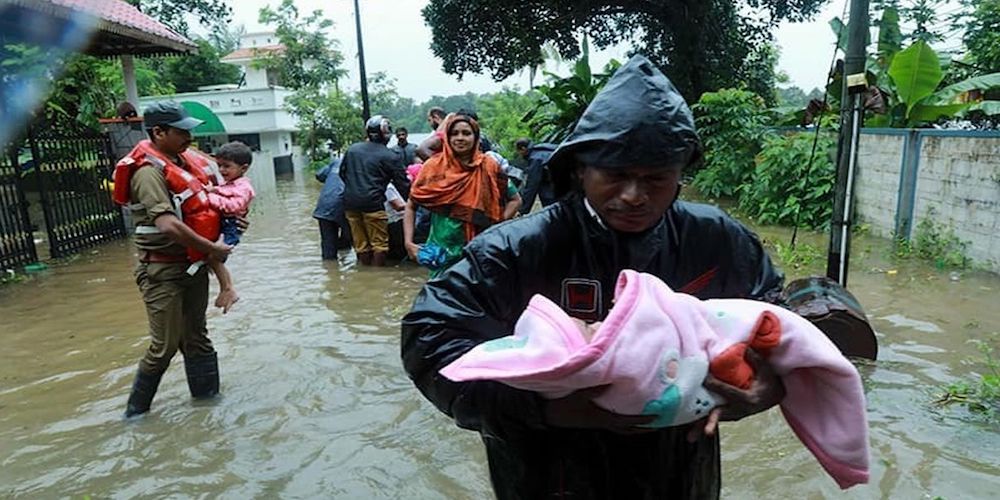6) Similarly change of nodal Ministry from Agriculture & Co -operation to Home Affairs and setting up of National Disaster Management Agency (NDMA) in 2004 led to transformation of the pattern of disaster management in India. In no time State and District level agencies too came up.
These got further fillip with formation of a dedicated National Disaster Response Force( NDRF) in 2006. Now with the help of such forces at key locations as also state capitals, response is becoming swift, certain and dependable.
NDRF with 13,000 trained professionals has been in a position to rescue over 1.44 lakh valuable lives and has evacuated more than 8 lakh persons stranded in disaster situations.
Extreme Weather Phenomena In North East India
7) Extreme weather developments nowadays are leading to unexpected heat, hot, sultry & humid conditions, cold or wetness etc, posing severe risks to human life. Sometimes localised unbearable weather can also cross geographical limits, causing destruction within two to three hours.
Talking of Tropical Cyclones, these also impact marine life and coastal regions more whereas inland regions are relatively safe from strong winds due to their rapid dissipation over land.
8) However, widespread floods can happen even in far inland areas due to the high amount of rain from Tropical cyclones.
This is what precisely has happened in the North Eastern states, especially in the second fortnight of June. According to a source,Meghalaya had recorded 203% excess rainfall, followed by Assam (170%), Tripura (151%), Arunachal Pradesh (65%), Mizoram (64%) and Manipur (20%).
9) When the Assam and Meghalaya flood situation was grim, these were widely reported in print and electronic media. With the situation improving in Meghalaya, in Manipur death of 34 persons and over 30 still missing in the biggest ever landslides(over a stretch of two kms)at a railway construction site at Marangching in Noney District on 29th June is sending shock waves. Maximum loss has been faced by the Jawans of Territorial Army, eleven of them hailing from Darjeeling and Sikkim.
10) Initially landslide debris had blocked Ijei river creating a reservoir. If sufficient number of excavators were not deployed, the original course of the river may not have been restored which may have led to inundation of many low lying areas.Because of continuous rainfall in the area flow in the local rivers is also expected to rise.
There is a precedent of such a nature in North Sikkim in 2017 when the fast flowing Kanaka river was blocked for a week by the debris of a landslide and one small village was submerged.
11) As far as Assam is concerned, at one stage, 32 out of 35 Districts were submerged including many parts of Guwahati. There is some respite in 25 Districts now. According to latest information released by Assam State Disaster Management Agency, the number of casualties has risen to 174 and 2.21 million people and a total of 1,590,557 domestic animals are still bearing the brunt of unprecedented floods.Setting up of 230 relief camps in Cachar Dist and 896 camps all over the state may not be sufficient. Water level in Barak river was flowing above danger level in several areas till recently leading to immense shortage of food, drinking water, medicines and many essential commodities.
12) When floods and landslides happen in Assam and many other states of Eastern India every year ,I suppose, local administration should make preparations in advance. All construction activities need to be halted especially along District and State roads.More damage in hilly portions of N.E. states and plains of Bihar in the coming two months can not be ruled out as in many areas Monsoon has not become aggressive as yet.




